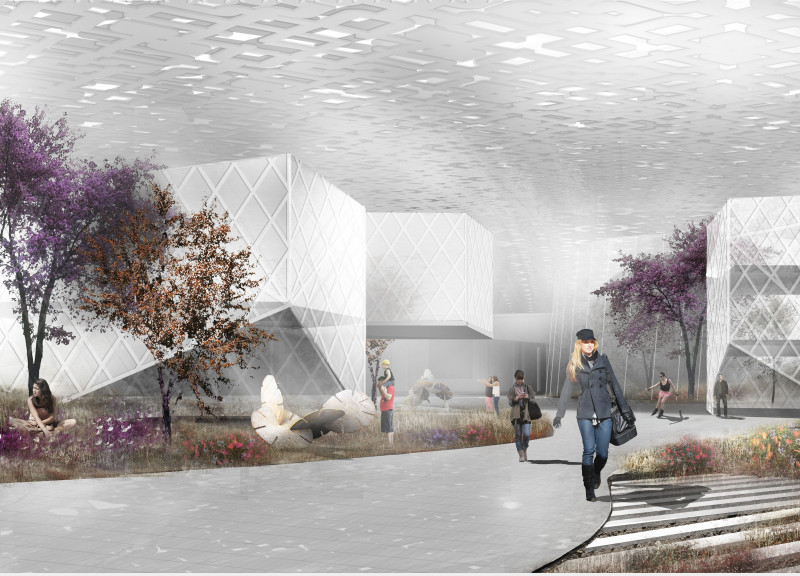5 key facts about this project
Innovative Integration of Spaces
A significant aspect of the Cultural Garden is its incorporation of multifunctional spaces, which accommodate various community activities and exhibitions. Each zone is designed to fulfill a specific purpose while facilitating seamless movement throughout the site. The integration of indoor and outdoor gardening areas allows for recreational use and enhances the overall aesthetic quality of the environment. Structures feature fluid architectural forms that challenge traditional boundaries between indoor and outdoor spaces, which exemplifies a contemporary approach to architecture.
Materials and Sustainability
The choice of materials plays a critical role in this project. Glass is employed extensively, promoting transparency and natural lighting, while concrete provides structural integrity. Additionally, eco-friendly materials are selected to align with sustainability goals. The design utilizes perforated surfaces inspired by local cultural symbols, which not only adds visual interest but also optimizes airflow and reduces heat gain, contributing to energy efficiency. The landscaped areas include plantings that support local biodiversity, ensuring the space is harmoniously integrated with its ecological surroundings.
Community-Centric Approach
One of the primary objectives of the Cultural Garden is to foster community engagement. The design creates a cultural hub where residents can participate in social and artistic endeavors. The project emphasizes inclusivity, encouraging diverse activities that promote both cultural awareness and communal connection. The architectural layout is strategically intended to enhance visitor experience, reflecting a commitment to facilitating interaction within the urban framework.
For a more comprehensive understanding of the Cultural Garden project, including architectural plans, sections, and design ideas, interested readers are encouraged to explore further details. This will provide deeper insights into the architecture and the unique elements that define this innovative design.


























